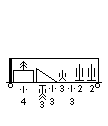| Viewed by |
 |
| Since 1/1/2007 |
Basic Organization of Panzergrenadier-Regiment in 1942
| Created by |
| Dr.Chuang |
| on 11/9/2003 |
Difference Between Schützen-Regiment (mot.) and Panzergrenadier-Regiment. There were at least four differences between old Schützen-Regiment and new Panzergrenadier-Regiment. First, one of the two regiments was initially planned to equip with SdKfz 251 SPW in its two battalions. But due to the severe shortage of production, only the first battalion of one regiment was carried by SdKfz 251 SPW in every Panzer-Division. The second battalion had to be transported by trucks and was so called "Gummi Panzergrenadier" ("rubber Panzergrenadier") by German. This meant only the first battalion was capable of following panzers across country and fighting from their SPW. Although the second battalion was still trained in tank-infantry tactics, they were hampered by their vehicles so they were often held in reserve for further expansion. Second, the number of company in each battalion was reduced to four companies, rather than previous five companies. The machine gun company in previous battalion was removed. Third, another two companies were raised under regiment command as its supportive firepower. The two new companies were motorized infantry gun company and self-propelled anti-aircraft company. Fourth, a Stab-Kompanie was added under regiment command with some supportive firepower (Table 1, Panzergrenadier-Regiment 1 in 1942 as an example).
Panzergrenadier-Regiment 1 in 1942
  |
||
|
|
|
|
|
|
||
Table 1. Basic organization of Panzergrenadier-Regiment 1 in 1942. The battalion and company levels show the traditional German tactical symbols.
The regiment had a total of 11 companies and the firepower of these companies was increased in various kinds of anti-tank weapons to deal with Soviet tanks. Every panzer grenadier platoon had one anti-tank rifle in platoon HQ. The 5 cm light mortar in the panzer grenadier platoon was also replaced by 8 cm heavy mortar which was concentrated in the heavy platoon. A motorized anti-tank gun squad with three 2.8 cm anti-tank guns was also added in the motorized heavy company. The motorized anti-tank platoon was also upgunned from 3.7 cm Pak to 5 cm Pak. A motorized anti-tank platoon with three 5 cm Pak was also added in the motorized HQ company. Not every regiment received the self-propelled anti-aircraft company and some of the companies were a mixture of different types of anti-aircraft vehicles. The number of light and heavy infantry guns was increased as compared to those in 1941 (Table 2).
Firepower of Panzergrenadier-Regiment 1 in 1942
|
light/heavy MG/ATR |
8 cm Mortar/2 cm Flak |
2.8 cm/5 cm Pak |
7.5 cm/15 cm IG |
|
| Stab Kompanie | 9/0/0 | 0/0 | 0/3 | 0/0 |
| I. Bataillon | 64/12/9 | 6/0 | 3/3 | 4/0 |
| II. Bataillon | 64/12/9 | 6/0 | 3/3 | 4/0 |
| 9. Kompanie |
4/0/0 |
0/12 | 0/0 | 0/0 |
| 10. Kompanie |
0/0/0 |
0/0 | 0/0 | 0/4 |
| Total | 137/24/18 | 12/12 | 6/9 | 8/4 |
Table 2. Firepower distribution in Panzergrenadier-Regiment 1 in 1942, MG: machine gun, ATR: anti-tank rifle, IG: infantry gun.
Difference Between Panzergrenadier-Bataillon (mot.) and Panzergrenadier-Bataillon (gp.). There was no difference between motorized Panzergrenadier-Bataillon and armored Panzergrenadier-Bataillon in the original organization chart. The fire power in two battalions was also the same. However, armored Panzergrenadier-Bataillon rode on half-track SdKfz 251 SPW and definitely enjoyed better mobility and protection than motorized counterpart. The SPW also became an ideal platform to mount various supportive weapons, such as heavy MG (SdKfz 251/1S) and 8 cm heavy mortar (SdKfz 251/2). The utility of SPW let the supportive weapons become self-propelled.
Creation of the 26. Panzer-Division, Panzergrenadier-Regiment 9 and 67. 14 September 1942, Amiens, France, half of Panzer-Brigade 100, Panzer-Regiment 202 with HQ personnel, personnel from the 6. Panzer-Division and mass of 23. Infanterie-Division was form to new Panzer-Division. The Panzergrenadier-Regiment 9 and 67 were converted from Infanterie-Regiment 9 and 67 of the 23. Infanterie-Division, respectviely. The major combat components in the 26. Panzer-Division included Panzer-Regiment 202, Panzergrenadier-Regiment 9 and 67, and Artillerie-Regiment (mot.) 93.
Creation of the 27. Panzer-Division and Reorganization of Panzergrenadier-Regiment 140. 1 October 1942, southern Russia, Kempfgruppe Michalik of the 22. Panzer-Division, remnants of field divisions and Heerestruppen from Heeresgruppe B was form to new Panzer-Division. The Panzergrenadier-Regiment 140 with regimental HQ, first battalion, and one SPW company was transferred from Kempfgruppe Michakik of the 22. Panzer-Division to the new 27. Panzer-Division. The second battalion was converted from part of the Kradschützen-Bataillon 24 of the 22. Panzer-Division. The major combat components in the 27. Panzer-Division included III/Panzer-Regiment 204, Panzergrenadier-Regiment 140 and Artillerie-Regiment (mot.) 127.
Creation of the 164. leichte Afrika-Division (mot.), Panzergrenadier-Regiment 125, 382 and 433. 15 August 1942, North Africa, the Festungs-Division Kreta (previous 164. Infanterie-Division) was converted to the 164. leichte Afrika-Division (mot.) step by step under the control of Panzergruppe Afrika. The Panzergrenadier-Regiment 125 was converted from Infanterie-Regiment 125 in Heerestruppen. The Panzergrenadier-Regiment 382 and 433 were converted from the Infanterie-Regiment 382 and 433 with the original division, respectively.
Creation of the Panzergrenadier-Regiment Afrika, 160 and 165 for North Africa Campaign. Late 1942, North Africa, three new Panzergrenadier-Regimenter were organized from various formation for defending Tunis. The Sonderverband 288 was converted to the Panzergrenadier-Regiment Afrika. The Infanterie-Regiment Tunis with three battalions was converted to Panzergrenadier-Regiment 160. The Regimentsstab Fullriede was converted to Panzergrenadier-Regiment 165.
Creation of the Panzergrenadier-Regiment 152 and 153 for the 345 and 386 Infanterie-Divisionen (mot.). 24 November 1942, troops training base Wildflecken in WK-IX, the Panzergrenadier-Regiment 152 was formed with 345 Infanterie-Division (mot.) for the replacement army to guide the training of reserve Panzer and Panzergrenadier units. 25 November 1942, WK-III, the Panzergrenadier-Regiment 153 was formed with 386 Infanterie-Division (mot.) for the same purpose.
List of Composition in Panzergrenadier-Regiment in 1942. There were 49 Panzergrenadier-Regimenter in 27 Panzer-Divisionen, 6 Regiments in leichte Afrika-Divisionen, 3 Regiments in Deutsch-Italiensiche Panzerarmee and 2 Regiments in Infanterie-Divisionen (mot.).
| Panzergrenadier-Regiment 1 | 1. Kompanie (gp.) | 1. Panzer-Division |
| Panzergrenadier-Regiment 2 | I. Bataillon (gp.) | 2. Panzer-Division |
| Panzergrenadier-Regiment 3 | I. Bataillon (gp.) | 3. Panzer-Division |
| Panzergrenadier-Regiment 4 | None | 6. Panzer-Division |
| Panzergrenadier-Regiment 5 | 1. Kompanie (gp.) | 12. Panzer-Division |
| Panzergrenadier-Regiment 6 | I. Bataillon (gp.) | 7. Panzer-Division |
| Panzergrenadier-Regiment 7 | None | |
| Panzergrenadier-Regiment 8 | I. Bataillon (gp.) | 8. Panzer-Division |
| Panzergrenadier-Regiment 9 | 26. Panzer-Division | |
| Panzergrenadier-Regiment 10 | I. Bataillon (gp.) | 9. Panzer-Division |
| Panzergrenadier-Regiment 11 | None | |
| Panzergrenadier-Regiment 12 | 1. Kompanie (gp.) | 4. Panzer-Division |
| Panzergrenadier-Regiment 13 | None | 5. Panzer-Division |
| Panzergrenadier-Regiment 14 | ? Kompanie (gp.) | |
| Panzergrenadier-Regiment 21 | None | 24. Panzer-Division |
| Panzergrenadier-Regiment 25 | 1. Kompanie (gp.) | 12. Panzer-Division |
| Panzergrenadier-Regiment 26 | Part of I. Bataillon (gp.) | 24. Panzer-Division |
| Panzergrenadier-Regiment 28 | None | 8. Panzer-Division |
| Panzergrenadier-Regiment 33 | None | 4. Panzer-Division |
| Panzergrenadier-Regiment 40 | Part of I. Bataillon (gp.) | 17. Panzer-Division |
| Panzergrenadier-Regiment 52 | 1. Kompanie (gp.) | 18. Panzer-Division |
| Panzergrenadier-Regiment 59 | None | 20. Panzer-Division |
| Panzergrenadier-Regiment 63 | None | 17. Panzer-Division |
| Panzergrenadier-Regiment 64 | Part of I. Bataillon (gp.) | 16. Panzer-Division |
| Panzergrenadier-Regiment 66 | I. Bataillon (gp.) | 13. Panzer-Division |
| Panzergrenadier-Regiment 67 | 26. Panzer-Division | |
| Panzergrenadier-Regiment 69 | II. Bataillon (gp.) | 10. Panzer-Division |
| Panzergrenadier-Regiment 73 | None | 19. Panzer-Division |
| Panzergrenadier-Regiment 74 | ||
| Panzergrenadier-Regiment 79 | None | 16. Panzer-Division |
| Panzergrenadier-Regiment 86 | None | 10. Panzer-Division |
| Panzergrenadier-Regiment 93 | None | 13. Panzer-Division |
| Panzergrenadier-Regiment 101 | None | 18. Panzer-Division |
| Panzergrenadier-Regiment 103 | I. Bataillon (gp.) | 14. Panzer-Division |
| Panzergrenadier-Regiment 104 | None | 21. Panzer-Division |
| Panzergrenadier-Regiment 108 | None | 14. Panzer-Division |
| Panzergrenadier-Regiment 110 | Part of I. Bataillon (gp.) | 11. Panzer-Division |
| Panzergrenadier-Regiment 111 | None | |
| Panzergrenadier-Regiment 112 | None | 20. Panzer-Division |
| Panzergrenadier-Regiment 113 | I. Bataillon (gp.) | 1. Panzer-Division |
| Panzergrenadier-Regiment 114 | II. Bataillon (gp.) | 6. Panzer-Division |
| Panzergrenadier-Regiment 115 | None | 15. Panzer-Division |
| Panzergrenadier-Regiment 125 | None | 164. leichte Afrika-Division |
| Panzergrenadier-Regiment 126 | I. Bataillon (gp.) | 23. Panzer-Division |
| Panzergrenadier-Regiment 128 | None | |
| Panzergrenadier-Regiment 129 | 1. Kompanie (gp.) | 22. Panzer-Division |
| Panzergrenadier-Regiment 140 | ? Kompanie (gp.) | 27. Panzer-Division |
| Panzergrenadier-Regiment 146 | None | 25. Panzer-Division |
| Panzergrenadier-Regiment 152 | None | 345 Infanterie-Division (mot.) |
| Panzergrenadier-Regiment 153 | None | 386 Infanterie-Division (mot.) |
| Panzergrenadier-Regiment 155 | None | 90. leichte Afrika-Division |
| Panzergrenadier-Regiment 160 | None | Deutsch-Italiensiche Panzerarmee |
| Panzergrenadier-Regiment 165 | None | Deutsch-Italiensiche Panzerarmee |
| Panzergrenadier-Regiment 200 | None | 90. leichte Afrika-Division |
| Panzergrenadier-Regiment 304 | 2. Kompanie (gp.) | 2. Panzer-Division |
| Panzergrenadier-Regiment 361 | None | 90. leichte Afrika-Division |
| Panzergrenadier-Regiment 382 | None | 164. leichte Afrika-Division |
| Panzergrenadier-Regiment 394 | 1. Kompanie (gp.) | 3. Panzer-Division |
| Panzergrenadier-Regiment 433 | None | 164. leichte Afrika-Division |
| Panzergrenadier-Regiment Afrika | None | Deutsch-Italiensiche Panzerarmee |
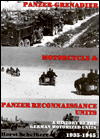 |
 |
 |
 |
 |
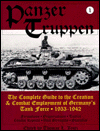 |
 |
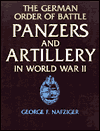 |
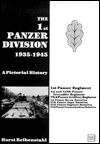 |
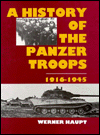 |
| Member of |
| Associated with |

